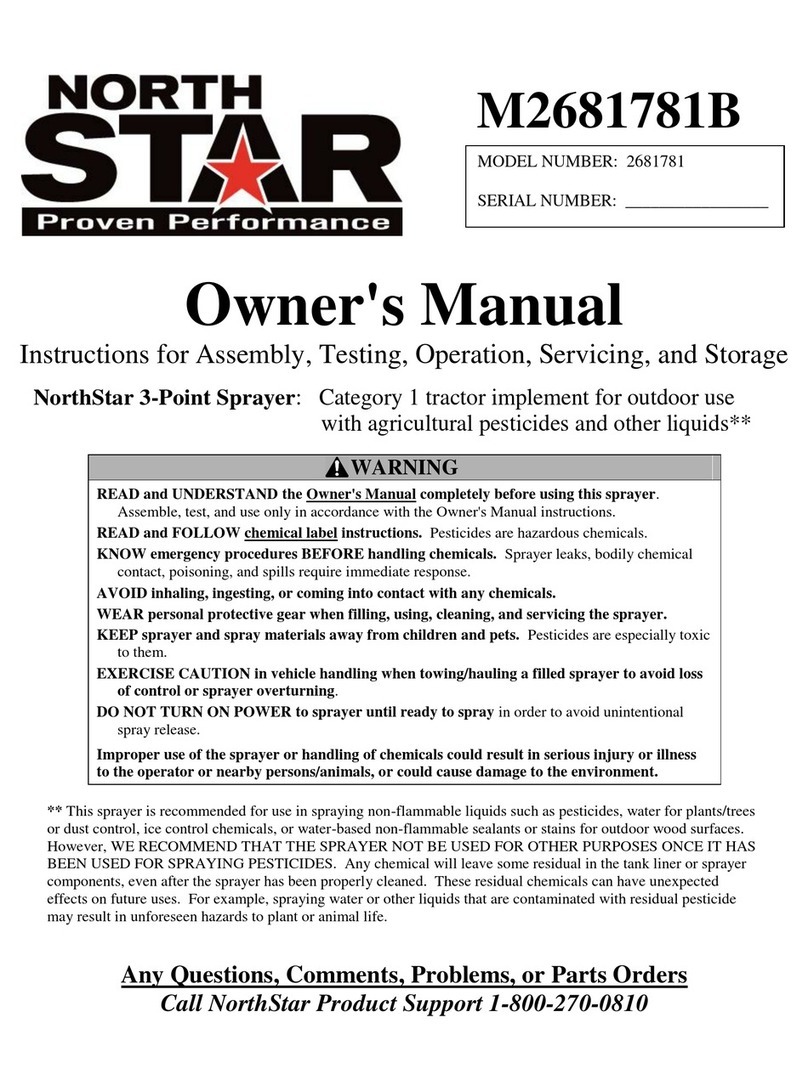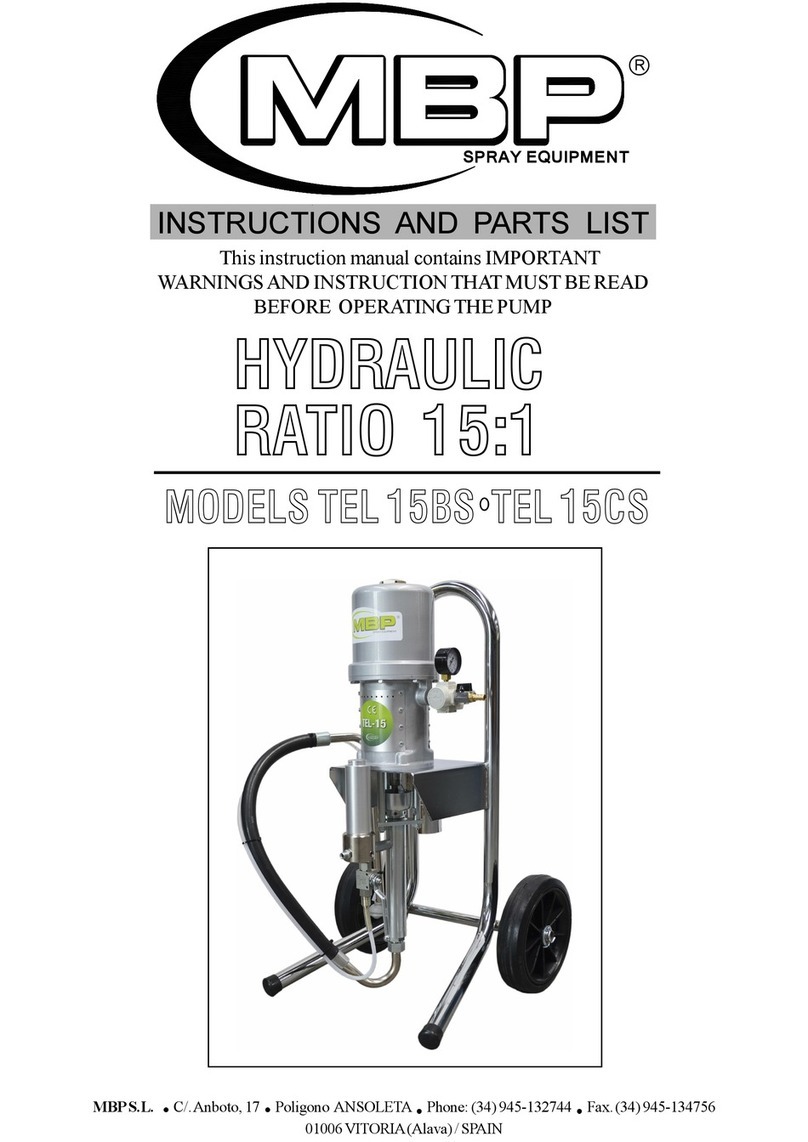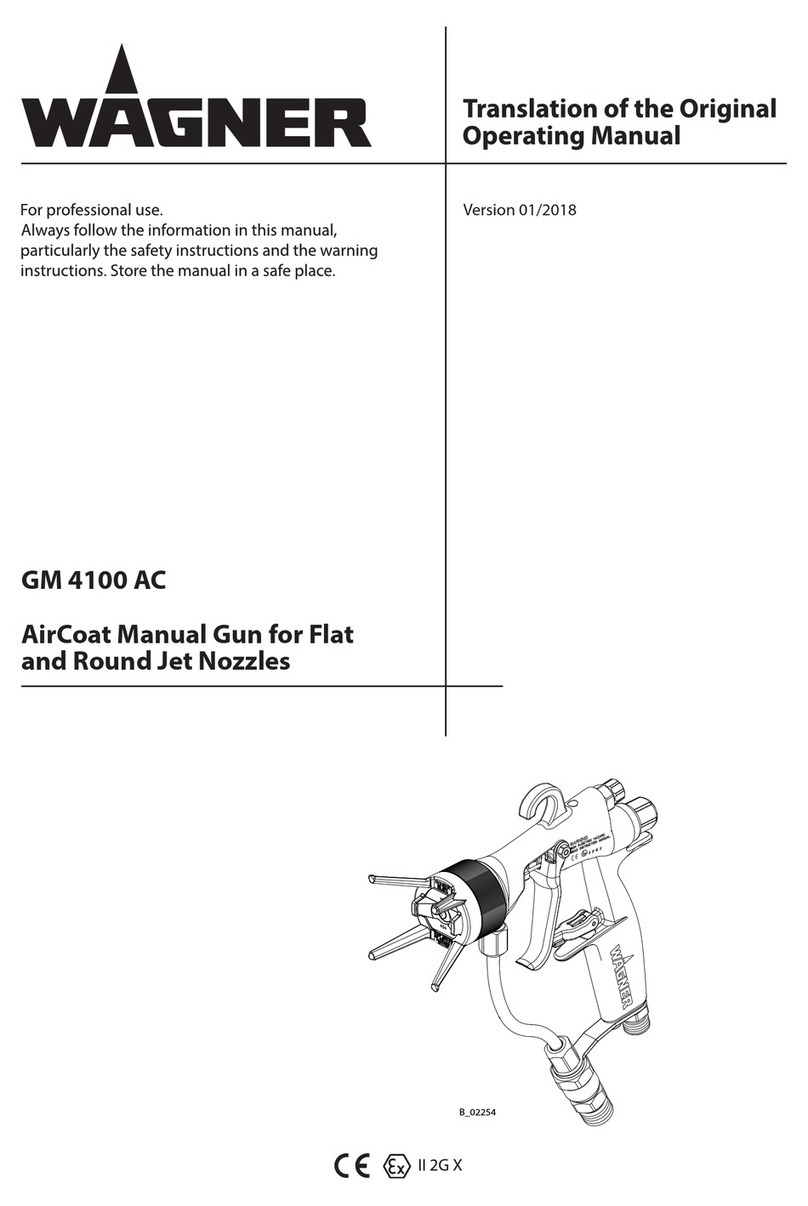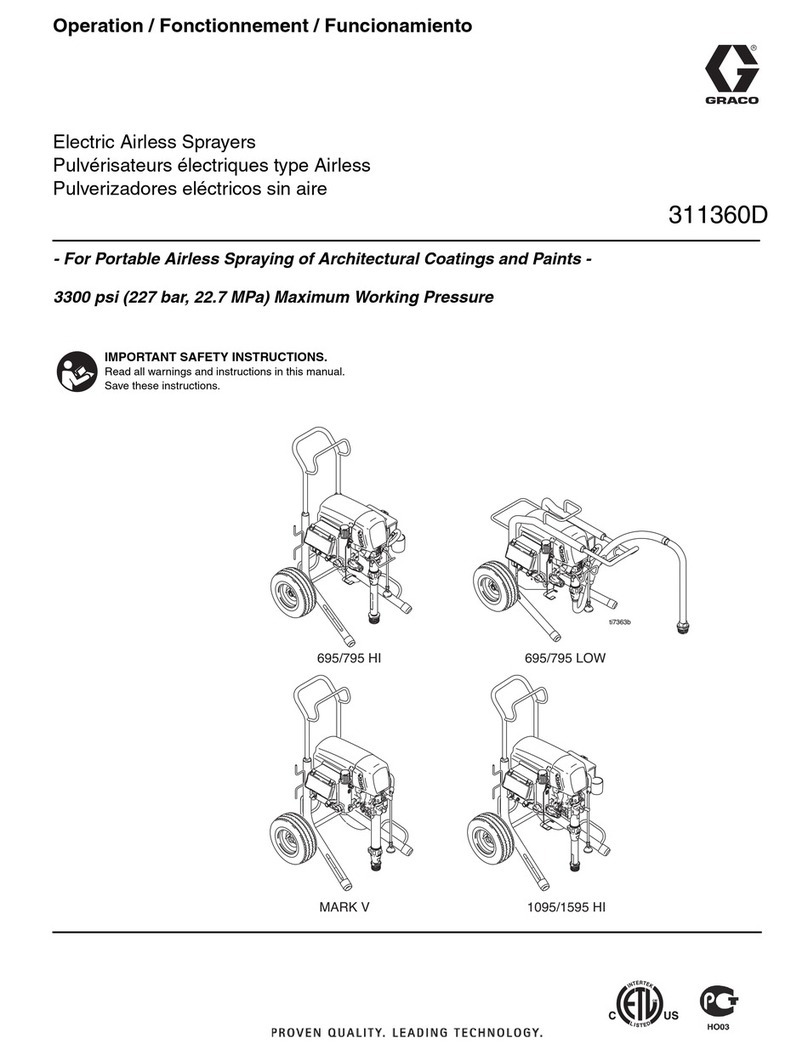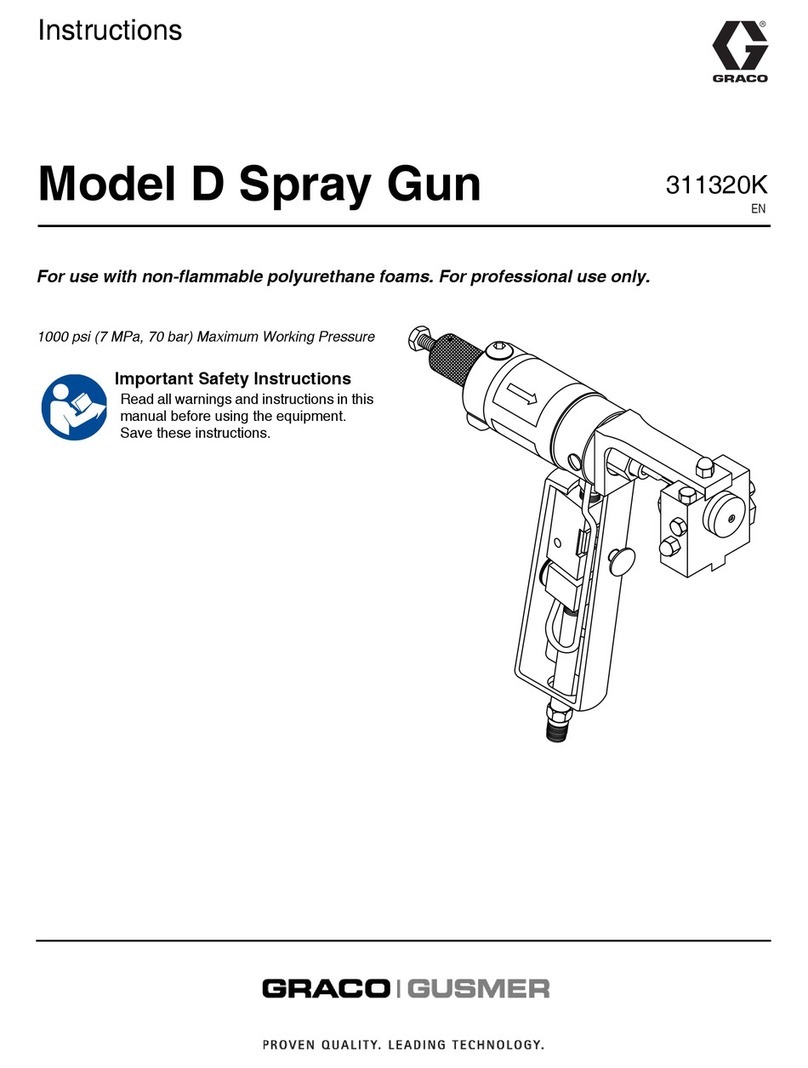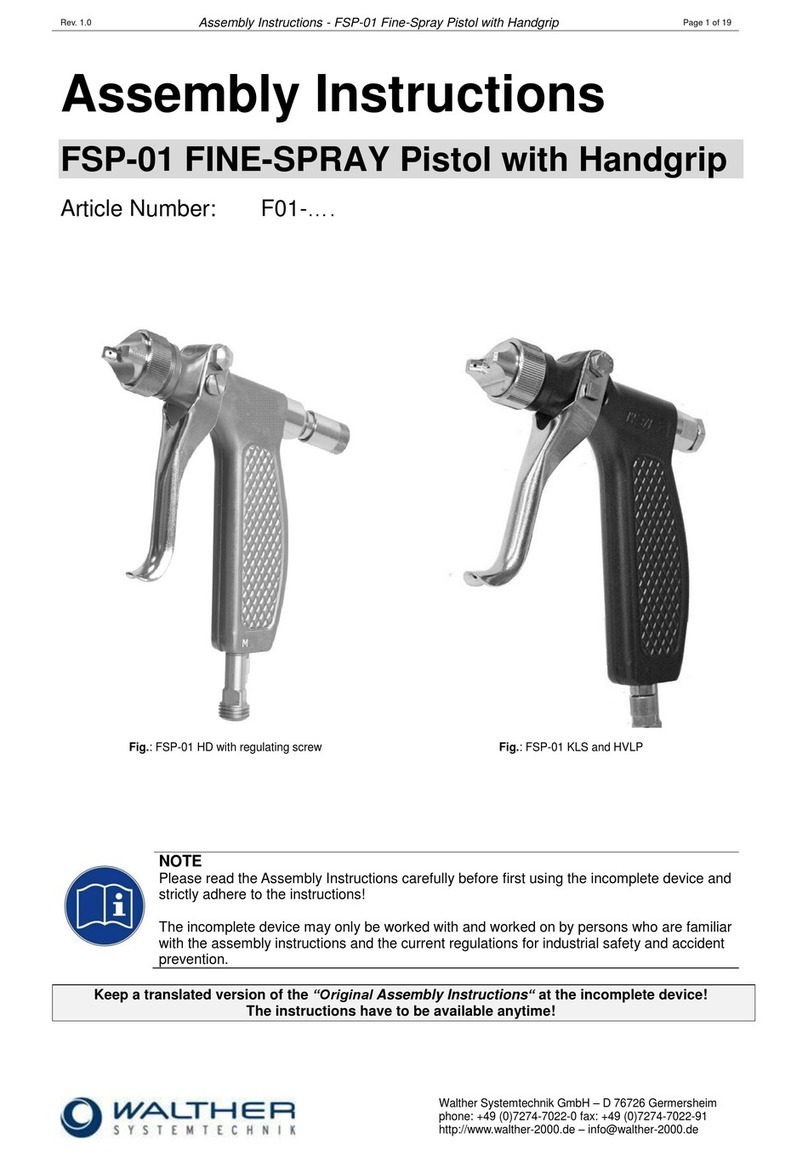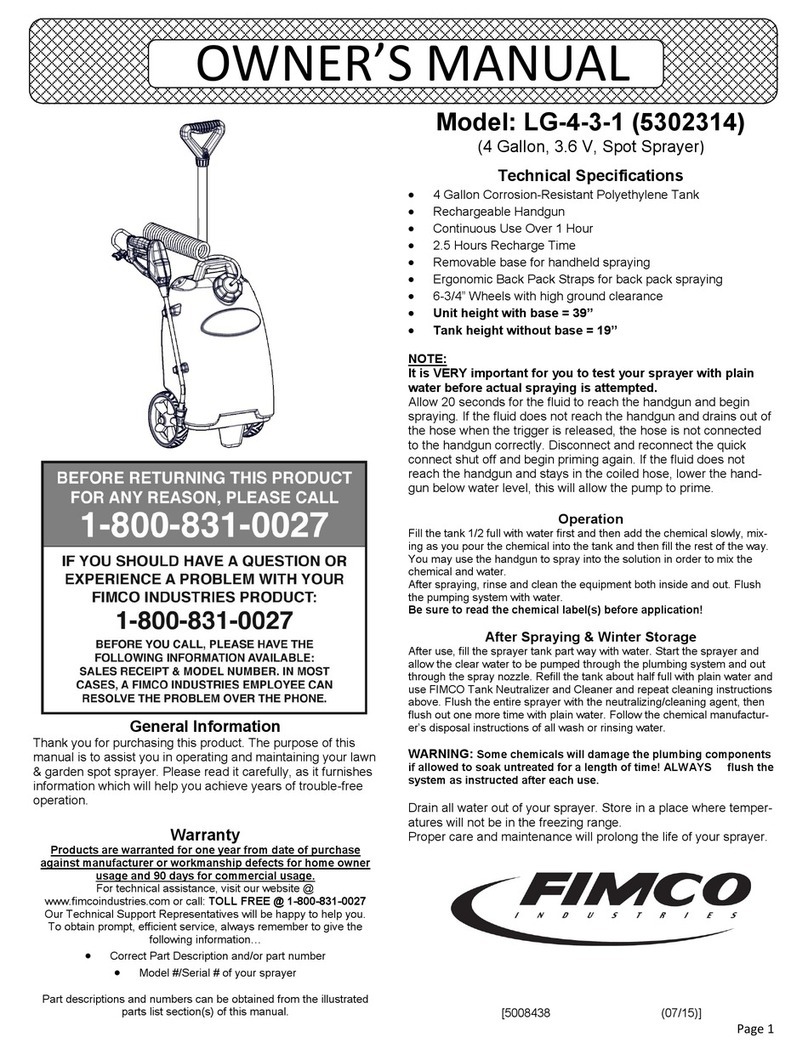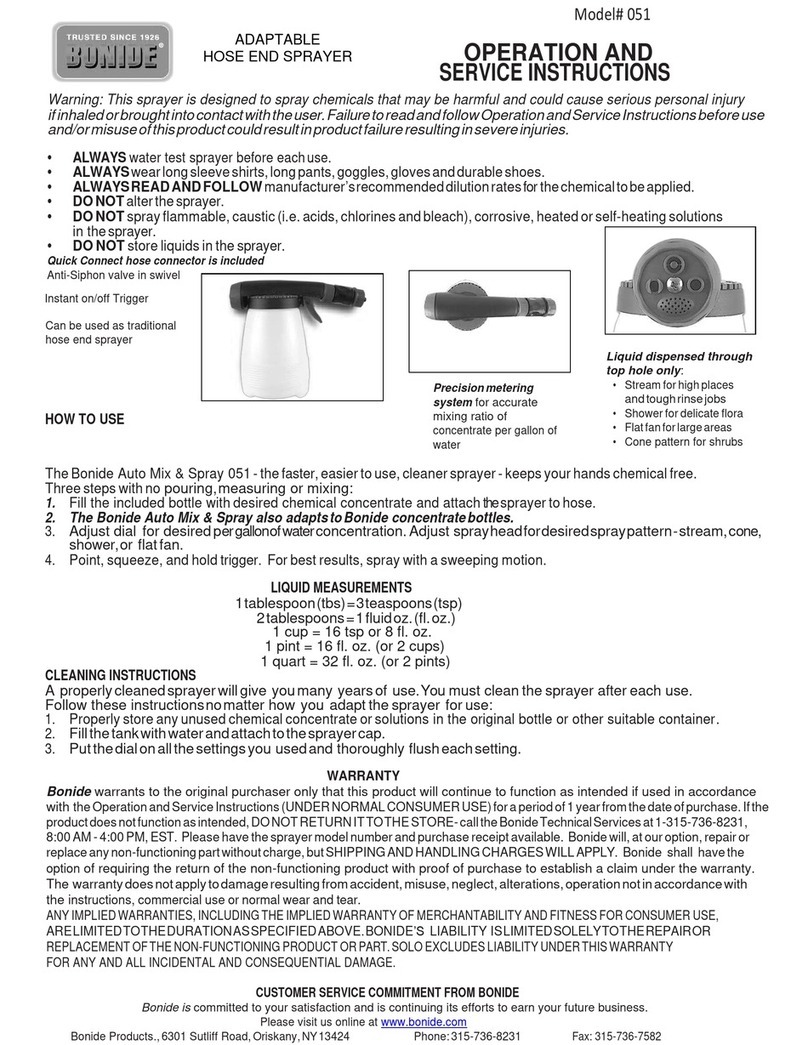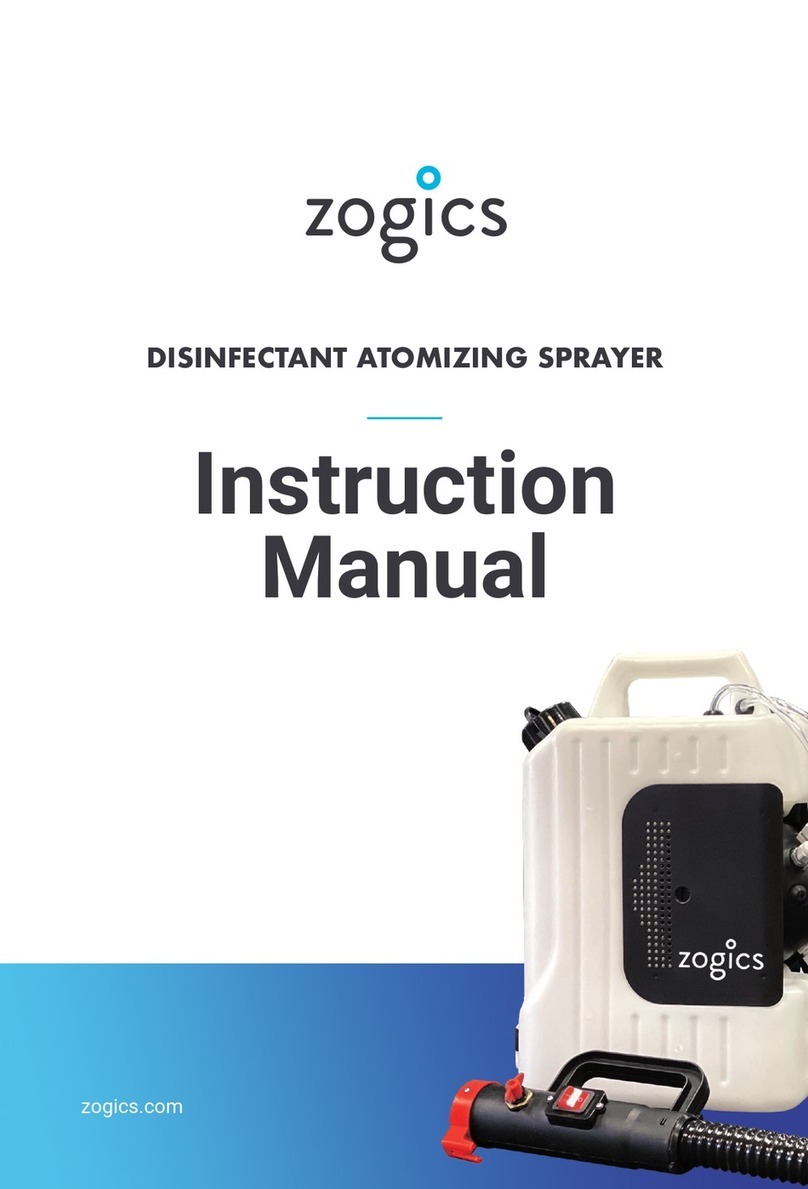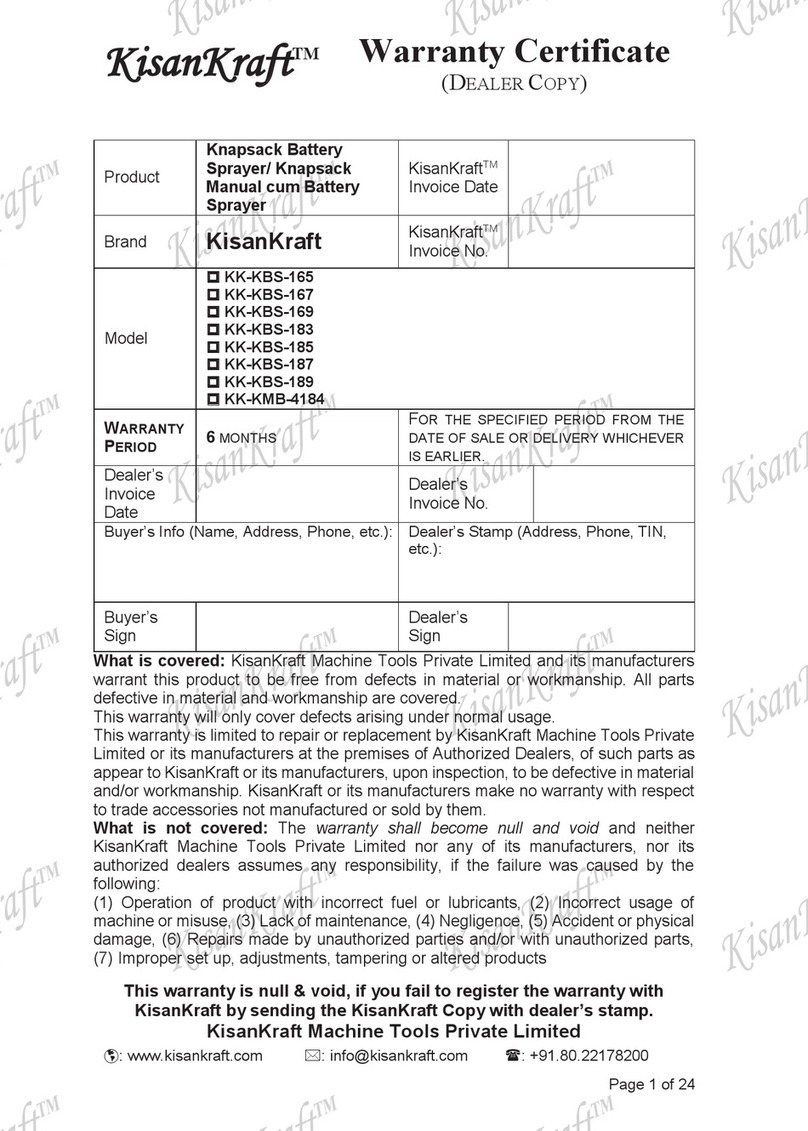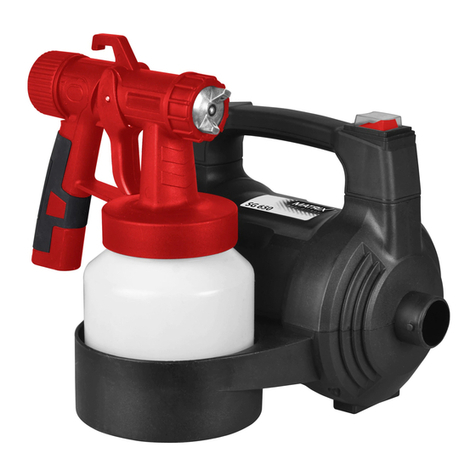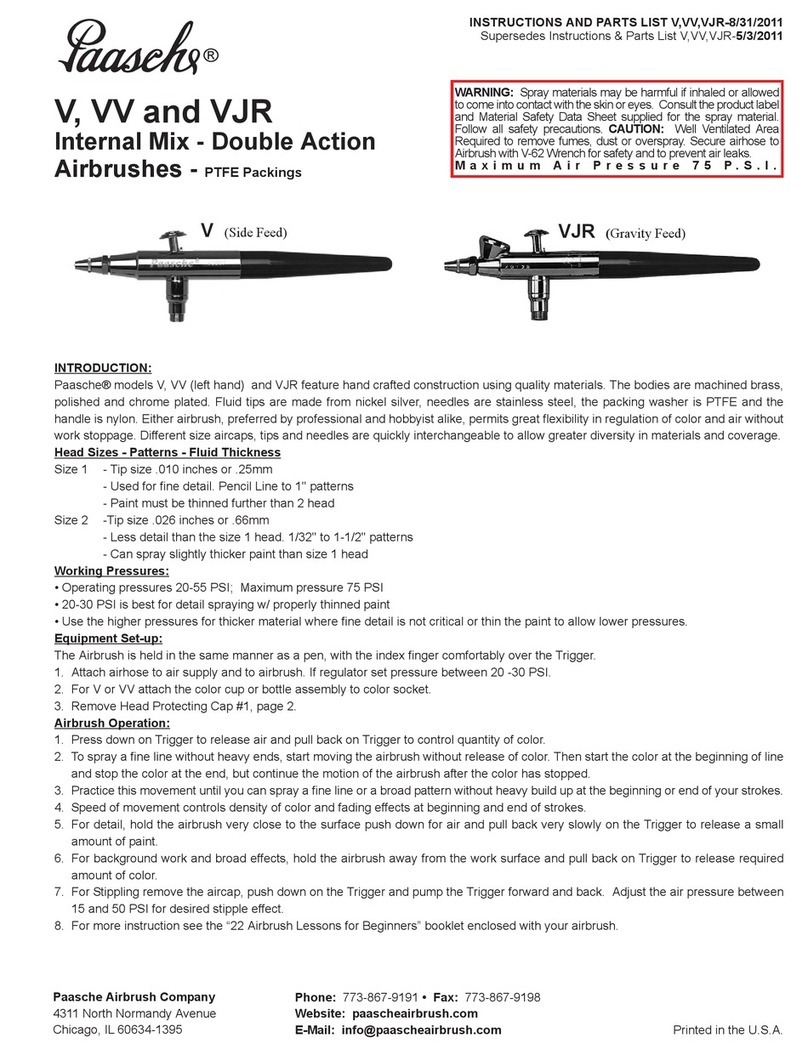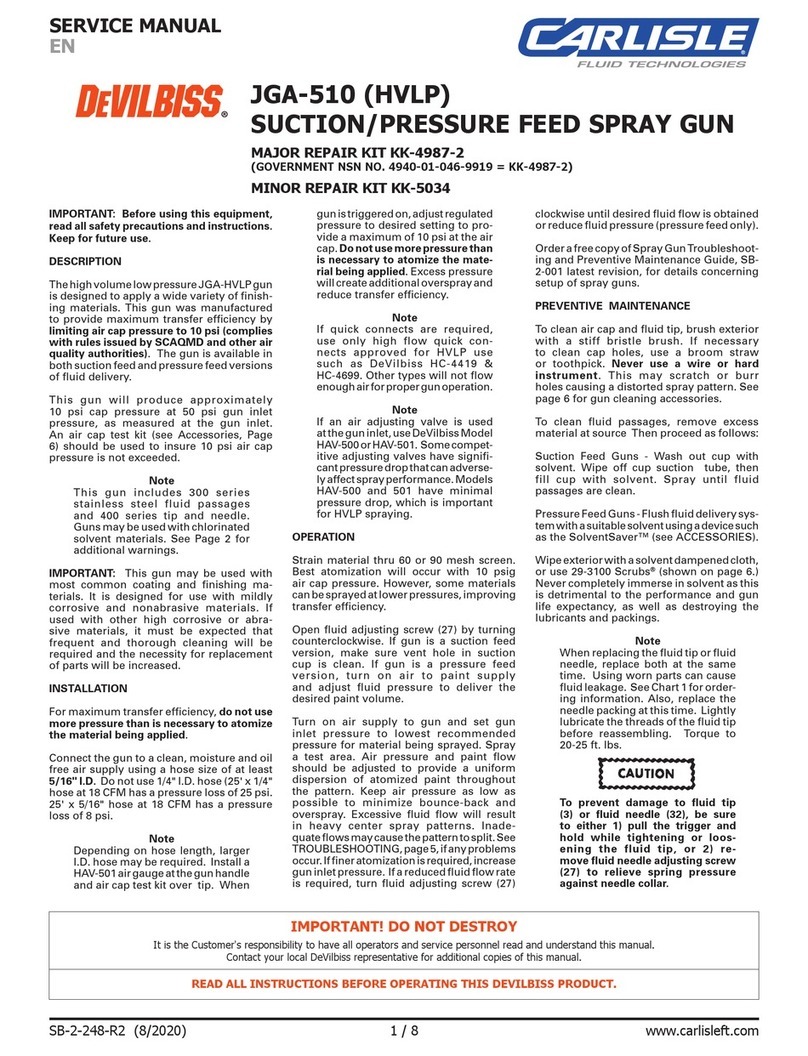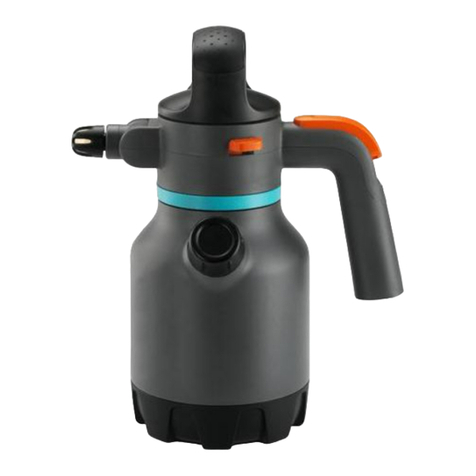•IN CASE OF FIRE, stop using machine immediately and extinguish with dry chemical, sandy soil, carbon
dioxide, or appropriate foam.
Chemical Application Safety
Before Spraying
•INSPECT and PREPARE sprayer before each use as directed in this manual.
•DO NOT START sprayer until ready to spray in order to avoid unintentional spray release.
•WEAR ADDITIONAL PERSONAL PROTECTIVE EQUIPMENT if you will be spraying overhead. You
will be exposed to much more chemical fallout in these applications. Wear chemical resistant head and neck
protection, full face mask or half face mask with sealed goggles and consider using a respirator.
•DO NOT SPRAY when wind speed exceeds 4 MPH to minimize spray drift.
•KEEP sprayer and spray materials away from children/pets. Pesticides can be especially toxic to children and
animals.
•DO NOT ALLOW anyone younger than 16 to operate sprayer since pesticides are especially toxic to children.
During Spraying
•DO NOT OVERAPPLY pesticide. Apply at rate recommended by chemical manufacturer. Excess pesticide can be
dangerous to humans/animals, damage desirable plants, and contaminate soil and water sources.
•DO NOT EAT, DRINK, SMOKE, RUB YOUR EYES, or TOUCH YOUR BARE SKIN while handling
chemicals and spraying.
•NEVER POINT THE SPRAY GUN at people or animals.
•DO NOT SPRAY near open flames or sources of heat.
•ALWAYS HOLD THE SPRAY GUN FIRMLY when using it to spray at higher pressures in order to prevent
gun from whipping. Always keep good footing and balance.
•EXERCISE EXTRA CAUTION when spraying near areas accessible to children and pets.
•CLEAN up spills immediately per instructions on the chemical label.
•TURN OFF vehicle and set brake or block wheels, TURN OFF sprayer, and RELIEVE system pressure before
leaving sprayer unattended.
•SEE Troubleshooting section of this manual before attempting any repairs. Wear personal protective equipment
and follow safety instructions.
After Spraying
•CLEAN sprayer immediately after use according to the directions provided in this manual.
•DECONTAMINATE yourself after you are done spraying and have cleaned the sprayer. Wash all exposed areas
of the body with soap and water and remove and launder clothing.
•DISPOSE OF or STORE remaining chemicals in secure storage with correctly marked container.
Transporting Safety
•READ safety instructions in your vehicle manual with regard to carrying heavy cargo loads.
•DISCONNECT battery and ensure rubber caps/plugs are installed before transporting.
•DO NOT ALLOW drivers younger than 16 to drive the vehicle with the filled sprayer attached.
•MAKE SURE SPRAYER IS SECURELY ATTACHED to vehicle.
•EXERCISE CAUTION in vehicle handling when driving with filled sprayer to avoid loss of control or rollover.
oKeep speed to a minimum so you can maintain control. Reduce speed prior to turns.
oAllow for more distance to stop.
oAvoid any sudden steering maneuvers, starts, or stops that could create liquid sloshing in the sprayer and
instability.
•SLOW DOWN and EXERCISE EXTRA CAUTION on sloped or uneven terrain. Pick the most level route
possible across fields--drive up and down slopes when necessary, rather than across. Use a vehicle equipped with a
roll over protection system (ROPS) if you will be working on non-level terrain.
•BE AWARE that visibility may be reduced when making turns or backing up.
•DO NOT RIDE or TRANSPORT cargo on the sprayer.
•TURN OFF both sprayer and vehicle, and SET BRAKES before leaving unattended.







